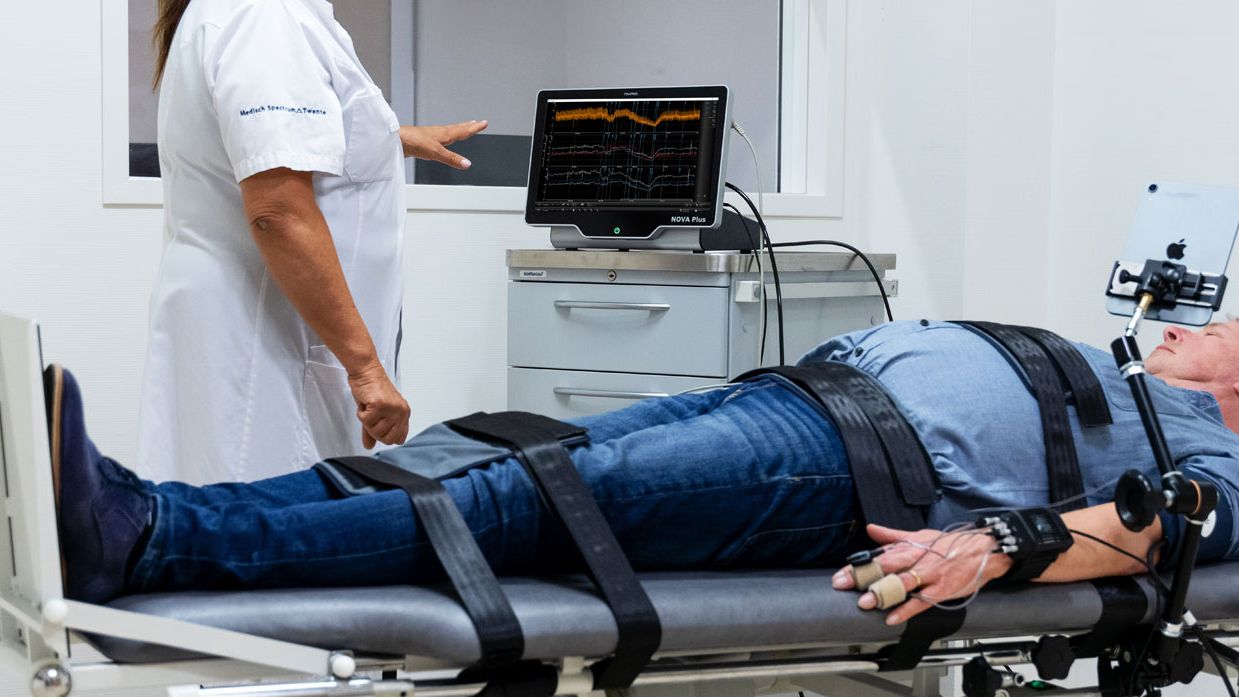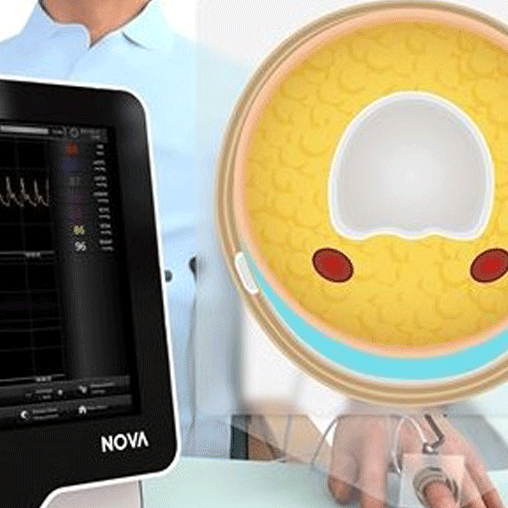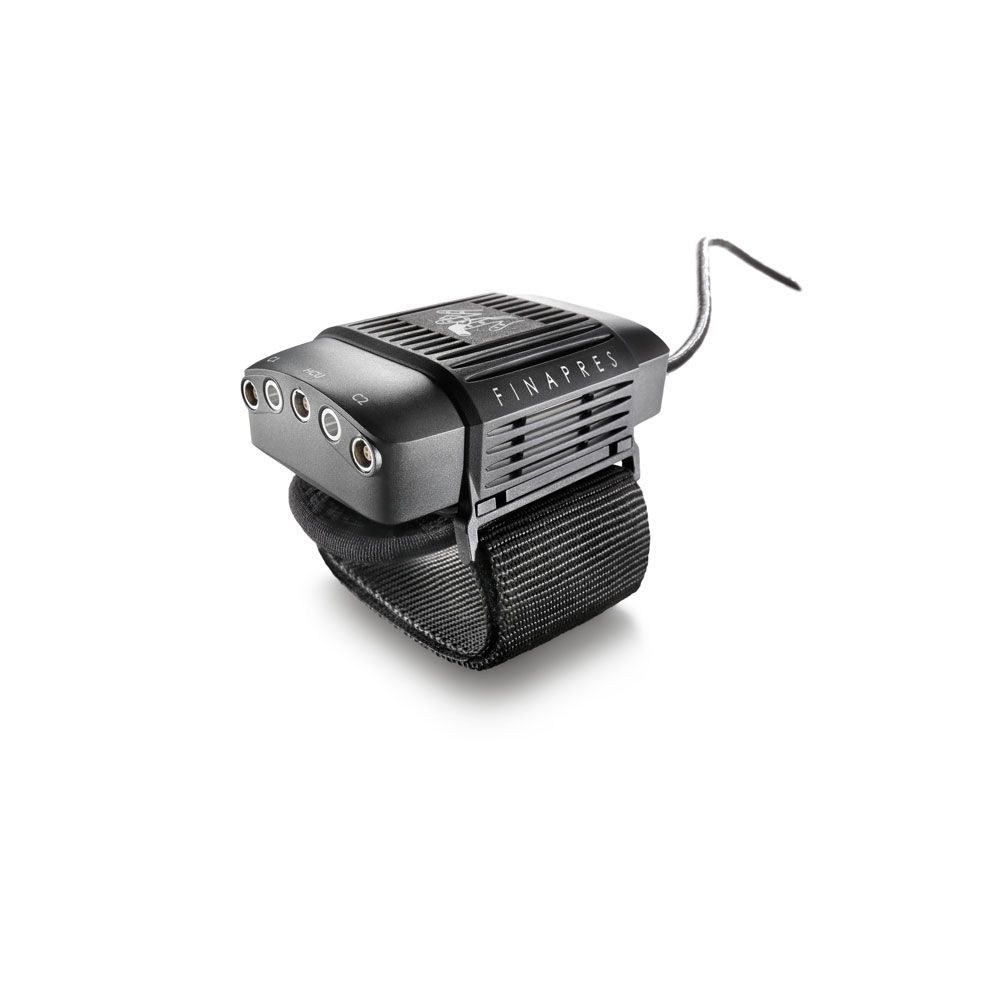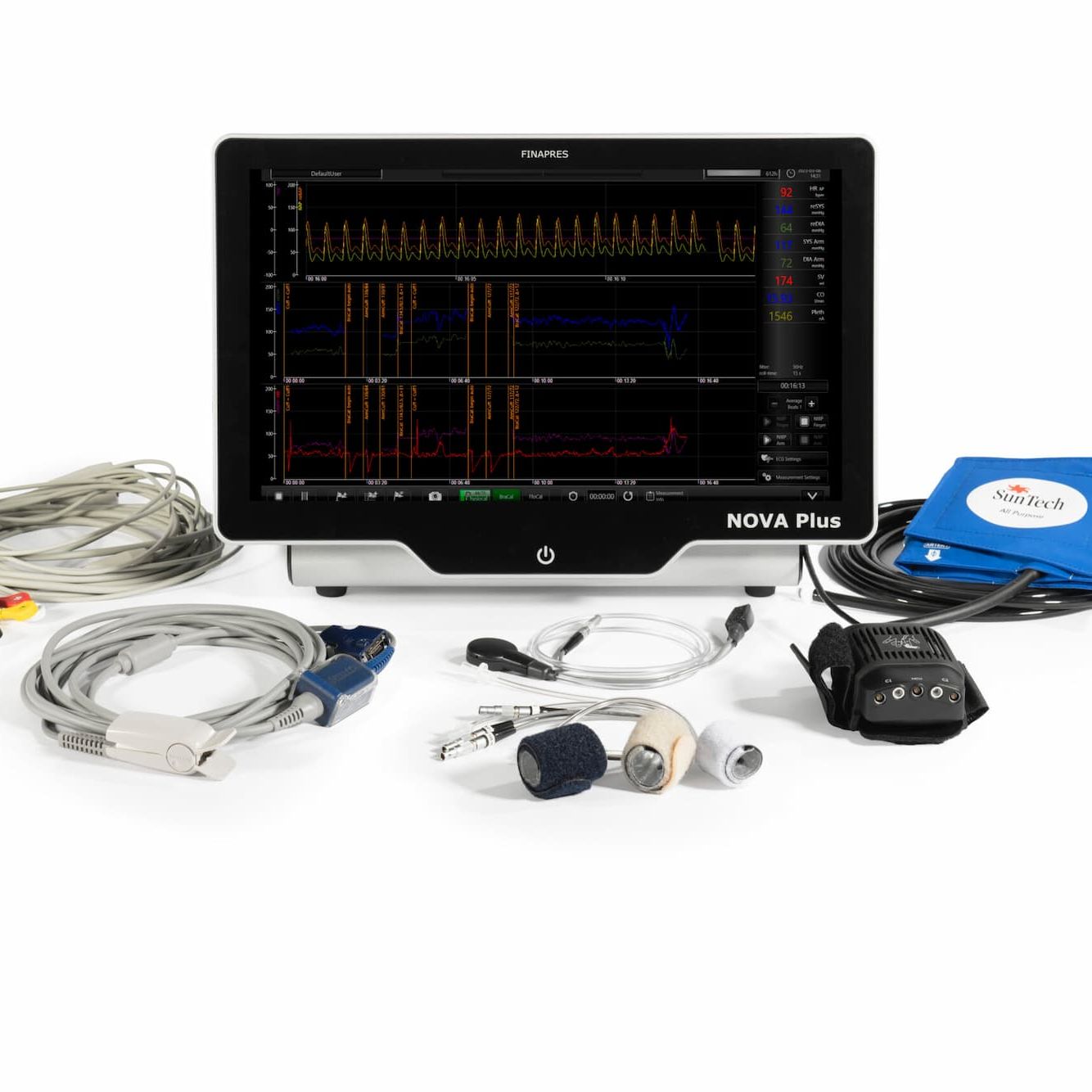The HCU consists of a liquid filled tube connected at one end to a pressure transducer. The reference ending is placed at the patients arm at heart level, while the other end is fixed to a finger cuff. The height signal is continuously recorded during measurements for monitoring and review purposes.
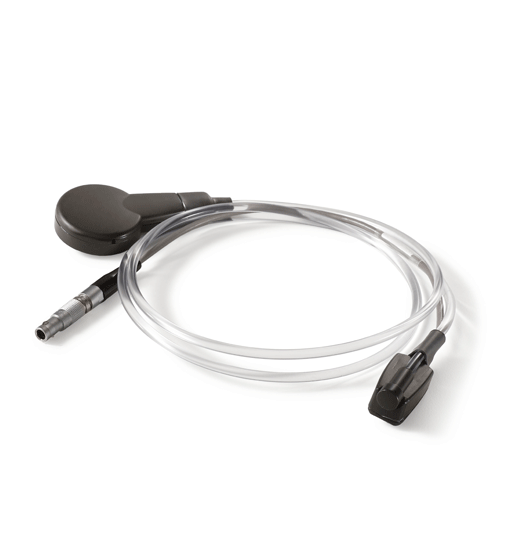

Using the HCU during measurements is highly recommended. In case no HCU is connected, the cuffed finger must remain at heart level during the whole measurement.
References
- Penaz, J. “Photoelectric measurement of blood pressure, volume and flow in the finger” In: Digest of the 10th International Conference on Medical and Biological Engineering. ” Dresden 104 (1973).
- Wesseling, KH “Physiocal, calibrating finger vascular physiology for Finapres.” Homeostasis 36 (1995): 67-82.
- Imholz, Ben PM, et al. “Fifteen years experience with finger arterial pressure monitoring: assessment of the technology.” Cardiovascular Research 38.3 (1998): 605-616.
- Langewouters, GJ, et al. “Why use Finapres or Portapres rather than intra-arterial or intermittent non-invasive techniques of blood pressure measurement?” Journal of medical engineering & technology 22.1 (1998): 37-43.
- Rongen, Gerard A., et al. “Comparison of intrabrachial and finger blood pressure in healthy elderly volunteers.” American journal of hypertension 8.3 (1995): 237-248.
- Gizdulich, Paolo et al. “Models of brachial to finger pulse wave distortion and pressure decrement.” Cardiovascular Research 33.3 (1997): 698-705.
- Westerhof, Berend E., et al. “Variable day / night bias in 24-h non-invasive finger pressure against intrabrachial artery pressure is removed by waveform filtering and level correction.” Journal of hypertension 20.10 (2002): 1981-1986.
- Guelen, Ilja, et al. “Validation of brachial artery pressure reconstruction from finger arterial pressure.” Journal of hypertension 26.7 (2008): 1321-1327.

